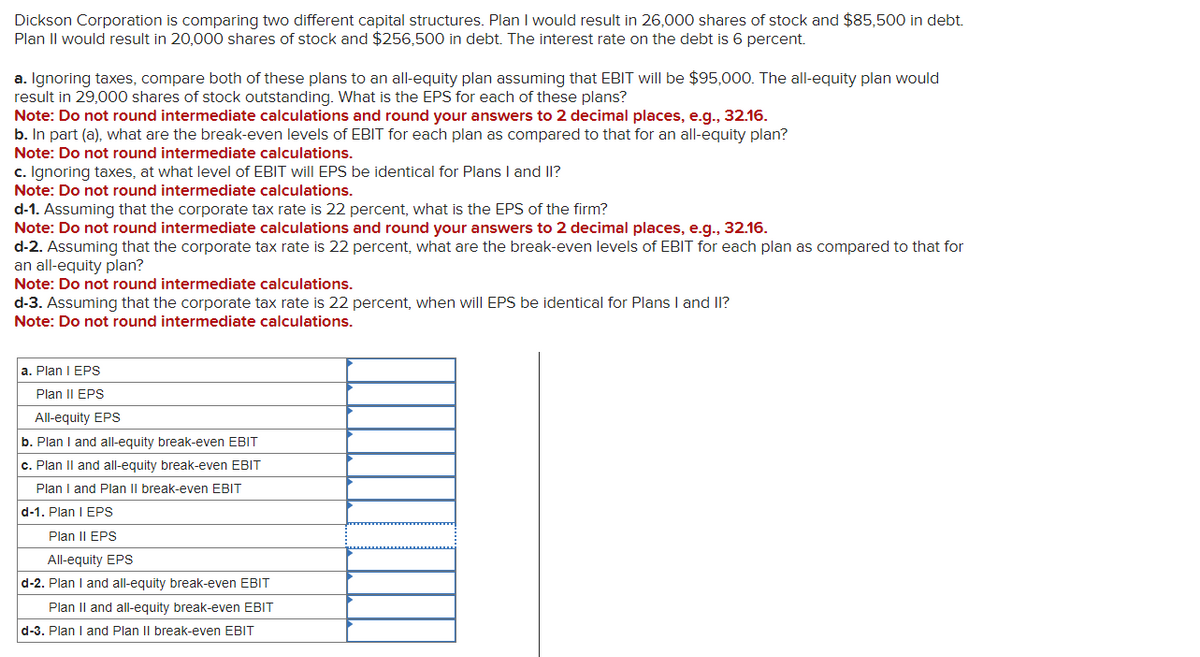Dickson Corporation is comparing two different capital structures. Plan I would result in 26,000 shares of stock and $85,500 in debt. Plan II would result in 20,000 shares of stock and $256,500 in debt. The interest rate on the debt is 6 percent. a. Ignoring taxes, compare both of these plans to an all-equity plan assuming that EBIT will be $95,000. The all-equity plan would result in 29,000 shares of stock outstanding. What is the EPS for each of these plans? Note: Do not round intermediate calculations and round your answers to 2 decimal places, e.g., 32.16. b. In part (a), what are the break-even levels of EBIT for each plan as compared to that for an all-equity plan? Note: Do not round intermediate calculations. c. Ignoring taxes, at what level of EBIT will EPS be identical for Plans I and II? Note: Do not round intermediate calculations. d-1. Assuming that the corporate tax rate is 22 percent, what is the EPS of the firm? Note: Do not round intermediate calculations and round your answers to 2 decimal places, e.g., 32.16. d-2. Assuming that the corporate tax rate is 22 percent, what are the break-even levels of EBIT for each plan as compared to that for an all-equity plan? Note: Do not round intermediate calculations. d-3. Assuming that the corporate tax rate is 22 percent, when will EPS be identical for Plans I and II? Note: Do not round intermediate calculations. a. Plan I EPS Plan II EPS All-equity EPS b. Plan I and all-equity break-even EBIT c. Plan II and all-equity break-even EBIT
Cost of Capital
Shareholders and investors who invest into the capital of the firm desire to have a suitable return on their investment funding. The cost of capital reflects what shareholders expect. It is a discount rate for converting expected cash flow into present cash flow.
Capital Structure
Capital structure is the combination of debt and equity employed by an organization in order to take care of its operations. It is an important concept in corporate finance and is expressed in the form of a debt-equity ratio.
Weighted Average Cost of Capital
The Weighted Average Cost of Capital is a tool used for calculating the cost of capital for a firm wherein proportional weightage is assigned to each category of capital. It can also be defined as the average amount that a firm needs to pay its stakeholders and for its security to finance the assets. The most commonly used sources of capital include common stocks, bonds, long-term debts, etc. The increase in weighted average cost of capital is an indicator of a decrease in the valuation of a firm and an increase in its risk.

Trending now
This is a popular solution!
Step by step
Solved in 4 steps with 4 images









